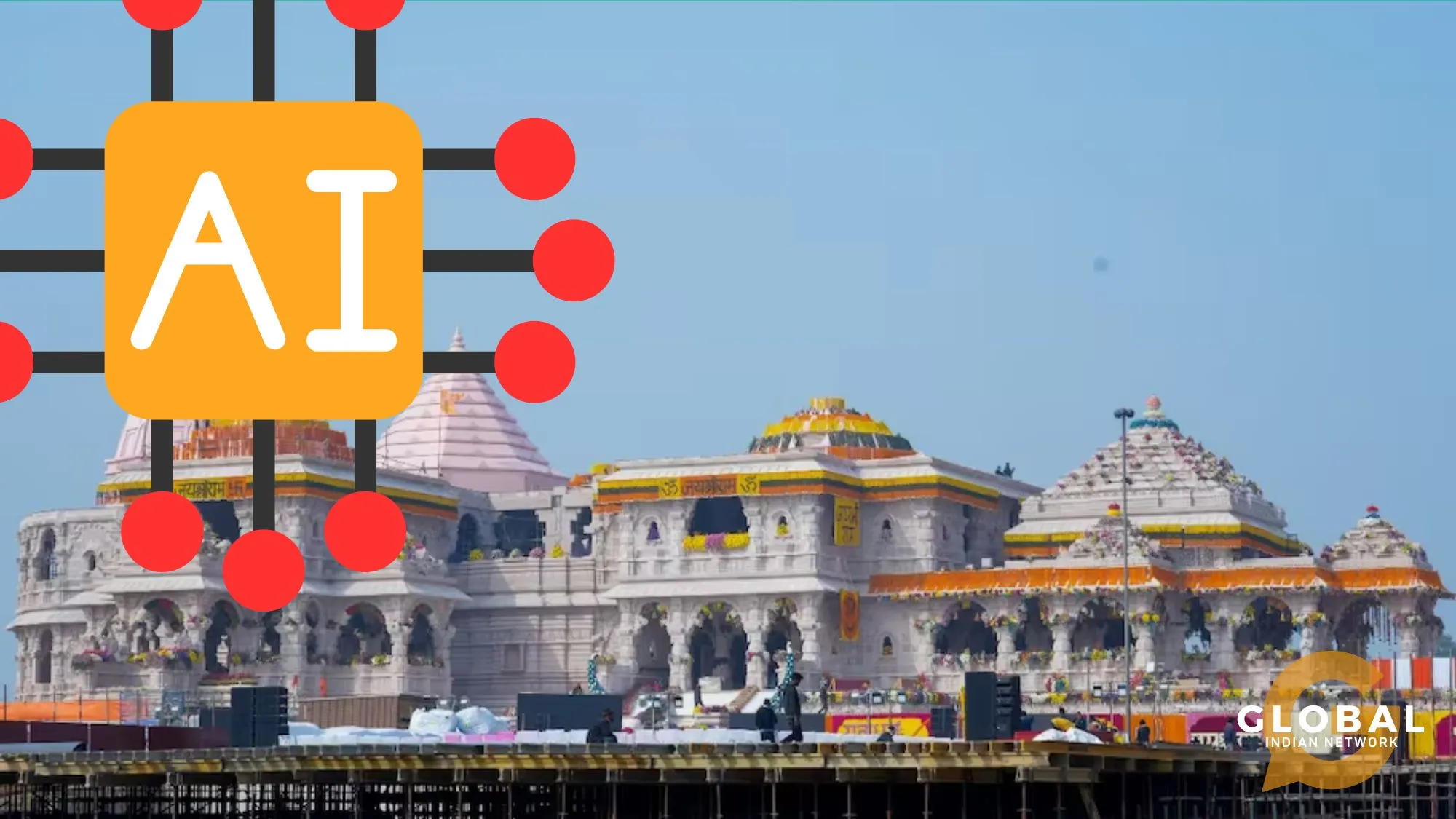As Ayodhya witnessed the Inauguration (Pran Pratishtha) ceremony of Ram Mandir on January 22, the government of Uttar Pradesh spared no effort to ensure the security of the temple town during the week leading up to it. The city's CCTV cameras had been incorporated with advanced technology to increase surveillance, identify suspicious activities, and aid in tracking down possible miscreants.
The inauguration of the majestic temple drew a multitude of individuals, from saints to prominent public personalities. The city had been secured with anti-terrorism squad commandos and bulletproof vehicles. Additionally, artificial intelligence (AI) drones bolstered security and guaranteed the safety of VIPs, pilgrims, and tourists who visited Ayodhya.
Table of Contents
AI's Role in Securing Ayodhya
Ayodhya had implemented AI surveillance to address potential security concerns and identify wrongdoers. As reported by News18, drones equipped with AI technology were conducting aerial surveillance throughout the city, and AI-powered anti-mine drones were scanning underground areas for mines or explosives.
In addition to drones, AI-integrated cameras played a crucial role in ensuring the safety of the temple town. Staqu Technologies, an artificial intelligence startup based in Gurgaon, recently announced its commitment to delivering real-time security surveillance in Ayodhya through its Jarvis platform using AI-driven audio and video analytics.
Atul Rai, co-founder and CEO of Staqu Technologies, stated that their AI-powered Jarvis platform would monitor the Ayodhya event for threats and suspicious activities, providing real-time alerts through existing cameras. The AI software uses reverse facial recognition to identify objects and people based on general inputs and movements. Jarvis has been integrated into Ayodhya's existing CCTV cameras in key locations like Kanak Bhawan, Hanuman Garhi, Shri Nageshwar Nath Mandir, Ram Ki Paidi, and Ram Janmabhoomi, as reported by PTI news agency.
Through Staqu's Trinetra software, the cameras in Ayodhya could access a criminal database of 800,000 individuals, allowing the UP police department to digitise criminal records and guaranteeing a 99.7% accuracy rate in identifying suspicious faces among registered criminals. Notably, it also combines facial recognition with audio cues in tracking criminals.
Jarvis also enables surveillance cameras to conduct attribute-based searches in crowded areas, identifying individuals based on specificities of clothing, colour, accessories, and accompanying children. The software is also equipped with impressive footfall analysis and violence detection tools. The AI surveillance in Ayodhya is currently on a one-month pilot project, with the potential for complete implementation in the future, reported Atul Rai, CEO of Staqu Technologies.
Additional Uses of AI
Beyond enhancing safety, AI enhanced the telecommunication experience for Ayodhya visitors during the Ram Temple inauguration. The Department of Telecommunications (DoT), as reported by the Economic Times (ET), utilised AI and machine learning (ML) for improved connectivity for visitors.
The DoT employed predictive analysis to estimate the expected number of attendees at the consecration ceremony. This information guided telecom companies in determining the additional mobile sites required and the appropriate technology - 2G, 4G, or 5G - to offer a seamless connectivity experience.
The mobile towers were adaptable to the crowd's movements, with the establishment of a war room to monitor all telecom activities in and around Ayodhya. As an official informed ET, artificial intelligence and machine learning allowed them to strategically determine the ideal towers and frequency bands to facilitate people's demands, such as high-speed internet for downloads and uploads.
Additionally, safety measures were set in place to safeguard telecom networks from potential cyber-attacks, as officials recognised the vulnerability of the telecom infrastructure and the importance of network security.
The grand inauguration of the Ram Mandir in Ayodhya on January 22, besides being a momentous religious event for the Hindus in India, also set the stage for a new era of advanced technology and security standards in the country. Artificial Intelligence (AI) enabled surveillance systems like facial recognition and attribute-based searches, and the Telecommunications Department's predictive analysis and optimised mobile connectivity have pushed India into the dawn of a new stage in technological innovation. Thus, a significant milestone achieved in the collective goal of creating a safe and well-connected environment, this occasion set a precedent for the harmonious intersection of tradition and innovation.











[…] Ram Mandir in Ayodhya, India, was officially opened and consecrated on January 22, 2024. The […]
[…] as the world's pace of change has been unprecedented since the printing press. The rise of AI has revolutionised healthcare, social media, and labour efficiency, but it also raises ethical […]
[…] practices in coding, encryption, and data protection. Robust blockchain solutions require stringent security measures to protect sensitive data. Firms like HCL Technologies prioritize security in their blockchain […]